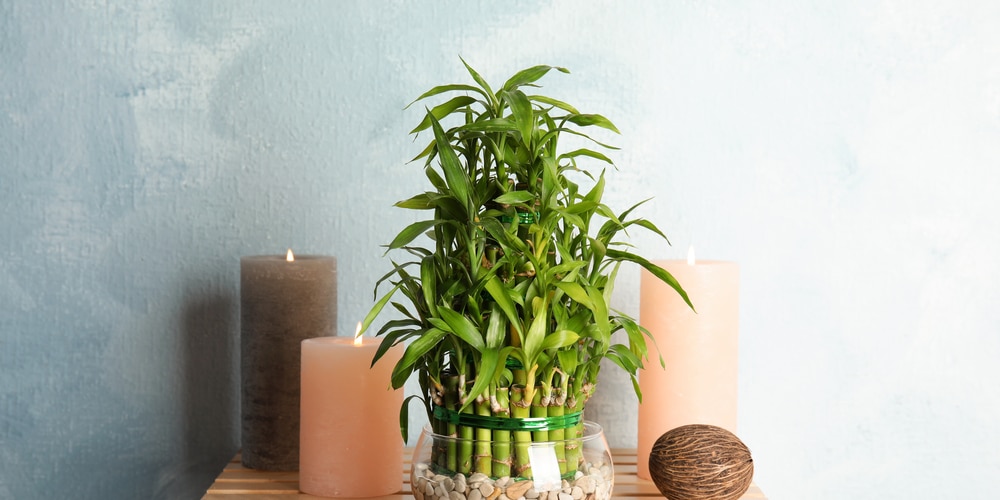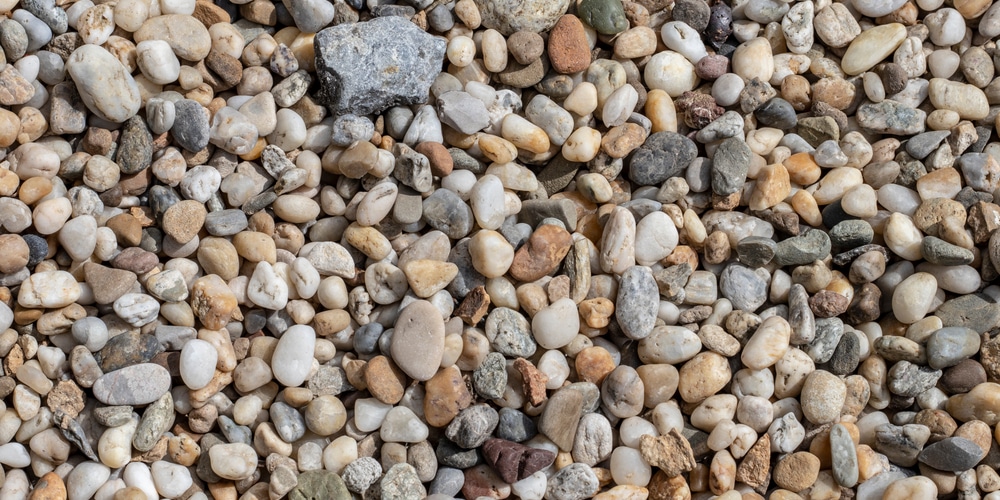Most growers grow Dracaena sanderiana and its related varieties either in water or soil. In any case, water is not their natural habitat. And if you keep them in pots, you need to repot them every year. Otherwise, the leaves will turn pale and yellowish. Let’s see how to repot Lucky Bamboo the easy way!
How To Repot Lucky Bamboo From Water To Soil

The best time to repot your Dracaena sanderiana is during the warm seasons. In fact, transplanting puts a lot of stress on plants. Plus, Lucky Bamboo hates cold months and may die if you expose its roots to a room temperature lower than 53F (12C).
1 – Preparing The Soil
If you transplant a Lucky Bamboo plant that grew up in the water, create the ideal soil mix first. In essence, you should mix fertile soil and sand for optimal drainage.
You can also use coconut coir for maximum aeration—you can make it yourself by cutting the hairy coconut skin after removing it from the hard shell. Sift it to remove the thick chunks, and you will have premium-grade coco peat!
The best soil amendment for growing Lucky Bamboo in pots is worm manure. Of course, you can buy worm casting if you want to keep this ornamental plant in a terracotta one. But you do not need to if you transplant it into your garden beds.
Lastly, add fine sand to keep the soil well-drained. Knead the mix well and remove any gravel.
2 – Preparing The Pot
Avoid plastic pots if you can. But if plastic ones are all you have, select one with large drainage holes. Instead, if you use a terracotta one with a big hole in the center, place a rock inside to prevent the soil mix from falling out. Do not add gravel to a plastic pot.
Only fill the pot up halfway with soil. The idea is to place the plant root in the center and cover it until the container is full.
3 – Combine As Many Lucky Bamboo Plants As You Want
If you have more than one curly bamboo, you can combine them before placing them inside the soil. Of course, make sure no pests live on either plant. If you spot spider mites, wash the plant with insecticidal soap.
4 – Add Gravel On Top (Optional)
Place a gravel layer to add extra weight. Plus, it can help steady the stalks. Gravel can also prevent squirrels from digging up your Lucky Bamboo plant if you place it outside.
5 – Water Your Plant Once A Week
You do not need to water the repotted Lucky Bamboo right away. As long as you do not use a dry soil mix, the plant will be fine. The moisture the roots have absorbed, coupled with the naturally moist soil, is enough for the plant to acclimate.
Mist the plant every day or two. It will do much better and quickly produce new bright green leaves.
How To Repot Lucky Bamboo Into A Bigger Pot
1 – Preparing The New Pot
If the new container is just a few inches larger, mix sand and perlite with an all-purpose soil mix. You can also follow the suggestions provided above to create nourishing soil for your plant.
Do not put gravel on the bottom because it will block the drainage holes. For a similar reason, do not throw plain sand and perlite as they will both fall out. A 50:50 ratio of sand plus perlite and gardening soil works well, too.
2 – Remove The Lucky Bamboo From The Smaller Pot
Turn the pot upside down and gently pull the stalks. Tap the pot on the bottom instead of dragging the root out from the top. As an option, insert a knife on the inner side and let it run along the border to detach compacted soil.
You can also separate the root if you want to take the stems apart. Then, repot each stalk following the steps listed in the above section: “How to repot Lucky Bamboo from water to soil.”
3 – Repot The Plant
Fill the new pot halfway through with soil mix and place the Lucky Bamboo. If the roots did not fill the bottom part of the smaller pot, take the wetter layer off because this plant does not like having wet feet.
4 – Fill The Pot Up
You only have to fill the pot and gently press the soil. Add some stones for a better look and plan for new repotting next year. Indeed, potted Lucky Bamboo plants need to be transplanted once a year.
